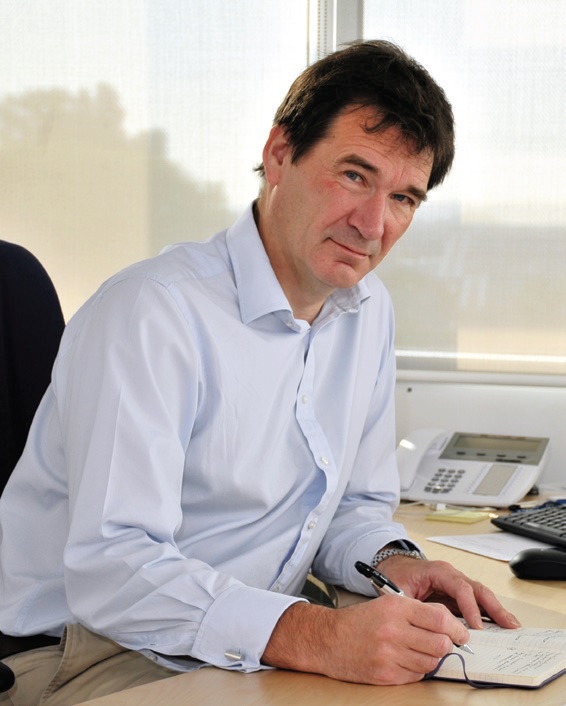
- Prof Andrew Harrison, CEO Diamond Light Source
As we close the financial year 2018-19, it is good to reflect upon the achievements of this period. 2018 was the Year of Engineering and this saw an increase in news and features from the engineering team resulting in some striking headlines. For example, the Daily Express showcased the work done with Martian Meridianiites within the facility. These minerals were named after the place they were discovered on Mars and provide direct evidence that there used to be surface water on this planet. This wonderful and engaging science was made possible by the design of a special cold cell built by our talented engineers.
The Year of Engineering has left a legacy of enhanced engagement, which we can now build on ensuring that career opportunities are more widely promoted, and staff continue to be good role models helping to attract the best talents into our organisation.
With the investment made in Diamond over the past 18 years, funded by the taxpayers through the Science and Technology Facilities Council (STFC) - UK Research & Innovation (86%) and the Wellcome Trust (14%), our institute now offers access to 32 beamlines and five complementary facilities (eBIC, ePSIC, MPL, XFEL Hub and XChem). The final beamline of the current phase of construction – DIAD – saw first light in the past year and will take first users in the next twelve months. All are pushing the boundaries of visualisation of molecules and materials at the atomic level, and enabling high quality science for both industry and academia. An indication of the role Diamond plays in establishing the UK at the forefront of science worldwide is the high impact of its work embodied in almost 8,000 peer review scientific articles published since the organisation was created, with citation rates significantly higher than the national average across the spectrum of science it serves.
A great illustration of the impact we are having is the work by an international team led by the University of Portsmouth and the US National Energy Research Laboratory that will enable a natural plastic digesting enzyme to be exploited more effectively in waste treatment. The unique visualisation tools used to elucidate the way the enzyme works were provided by several of our beamlines. The research made the headlines all over the world, generating the equivalent of over £23M of advertising spend in press and broadcast coverage.
This review contains many more examples of high impact science drawn from across the broad range of areas of fundamental science that Diamond serves, and the societal challenges it helps address. These include health and wellbeing, the environment, transport and energy challenges of the future, as well as new functional materials, including electronic devices and high-performance engineering alloys, and new processing technology for innovative manufacturing.
All of these achievements reflect the skills, hard work and commitment of the dedicated staff that we have within our walls. They also reflect the strong engagement of a vibrant and growing user community in academia and industry. In the last financial year, we received 1,788 proposals for experiments on our instruments via peer reviewed access routes, requesting a total of 22,117 shifts. After peer review, 1,191 proposals were awarded beamtime. This resulted in 12,497 experimental shifts being awarded across 30 beamlines and eight electron microscopes. We welcomed 6,332 onsite user visits from academia across all instruments, with an additional 4,459 remote user visits. The machine continues to perform to the highest standard with 98.4% uptime and 90.3 hours mean time between failures (MTBF).
However, we cannot afford to rest on our laurels. The pace of technical development is rapid and relentless so if we are to continue to offer the scientific community the best opportunities for world-leading research, we need to plan to take advantage of such advances. We have already started a very substantial rolling programme of upgrades to beamlines supported by a considerable uplift in capital from our shareholders. We aim to complement this programme with the Diamond-II upgrade of the machine and instruments, which with a factor of 20 times reduction in emittance coupled with an increase in electron beam energy from 3.0 to 3.5 GeV will provide up to a factor of 70 increase in brightness and coherence of Diamond’s photon beams at the higher energies. A new lattice geometry will allow us to not only keep and enhance all current beamlines, but offers the opportunity for up to five new additional beamlines to be created. The science case has been well received and approved by our Science Advisory Committee (SAC) and Diamond Industrial Science Committee (DISCo). The Conceptual Design Report (CDR) has also been approved by an international expert panel, clearing the way to work on the Technical Design Report (TDR) for which we will need an increase in staff and resources for much more detailed planning.
To remain at the cutting-edge of science, we need to ensure we continue to attract people from all over the world because they bring their different perspectives and skills. We also need to engage more closely with other facilities that provide complementary technical expertise. These are global endeavours, but the highest density of world-class light source facilities and suitably trained scientists and engineers are in Europe, so it is more critical than ever that we maintain close and effective ties with our closest and strongest allies. To this end, in 2017 we became Members of LEAPS – the League of European Accelerator-based Photon Sources – an organisation that brings together every synchrotron and Free Electron Laser (FEL) facility in Europe. Over the past year, the collaboration has developed a collection of projects for enabling technology, from new sources and optics to detectors and data analysis tools, that we will work on together to ensure that we are all able to support the most brilliant science and innovation well into the future.
